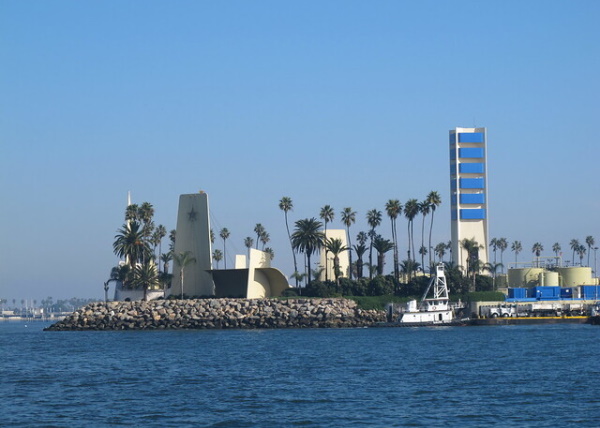Greenwashing may be a new term but it has deep roots. Take the THUMS Islands, for instance. Constructed in the mid 1960s, the four artificial islands just off Long Beach may have been built to look like tropical resorts but they conceal a slippery secret more valuable than gold… BLACK gold!
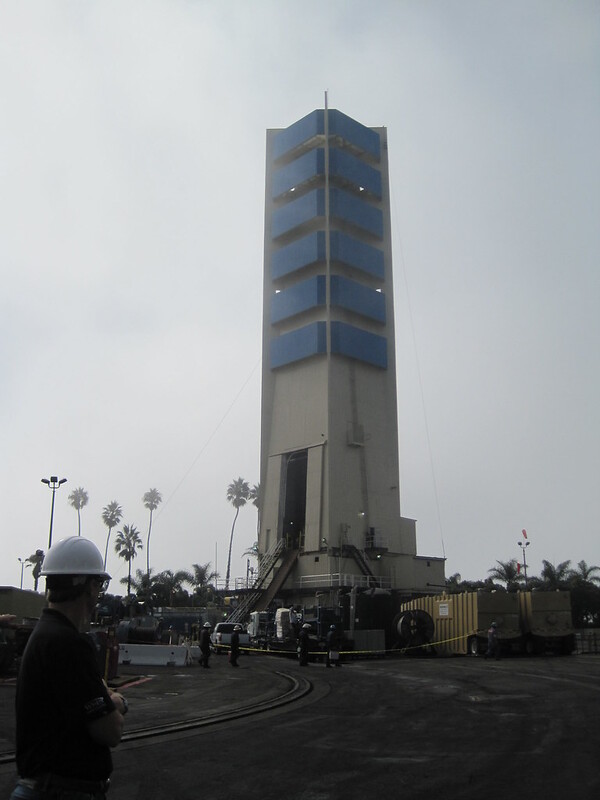
The THUMS Oil Islands are hard to miss. Situated just off the coast of Long Beach, California, the quartet of artificial islands stand in plain sight whether one is onshore and looking out to sea, or on a boat in San Pedro Bay, looking inland towards the Long Beach city skyline. (images via donielle at top and EnergyTomorrow above)
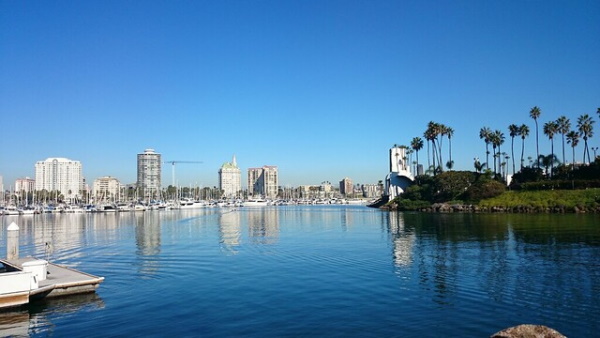
It’s perhaps because of their prominence that the City of Long Beach and the State of California exacted some surprising (for the times) concessions from the consortium of oil companies who sought to set up what would later be known as the THUMS islands as drilling platforms. This all occurred in the early 1960s, an era that extolled unbridled economic expansion as the New Frontier and the prime route to prosperity. It was years before the first Earth Day in 1970. On the other hand, 1962 saw the publishing of Rachel Carson’s “Silent Spring” and a budding environmental movement was slowly gathering steam. (image via Payton Chung)
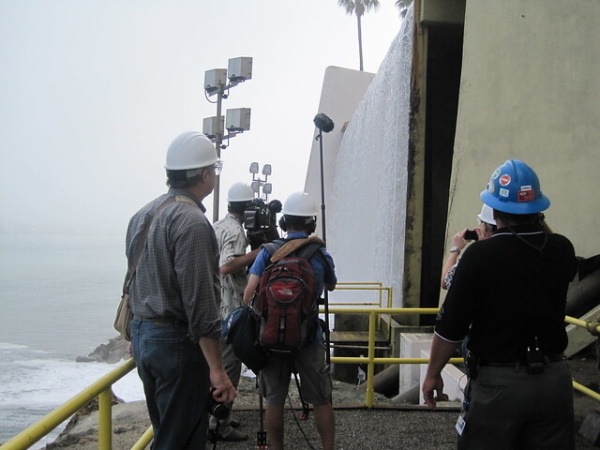
The oil companies forming the consortium were Texaco, Humble, Unocal, Mobil and Shell – line up their first initials and you get “THUMS” – were bought out by Occidental Petroleum in the year 2000. The oil tapped by wells on the four islands has a much longer history, however, being drawn from the immense Wilmington field discovered in 1932. Drilling in and around Long Beach within the protected Long Beach Breakwater was the preferred option for Big Oil but, to their undoubted shock, Big Government wasn’t about to let them walk in and “strip mine” the scenic coast. Instead, a partnership agreement was put forth that required THUMS to not only disguise the sight and sound of their activities, but to beautify the infrastructure so that it would complement the sophisticated style of the southern California cityscape. And agree they did: such was the power of the abundant “black gold” lurking beneath the seabed. (image via EnergyTomorrow)
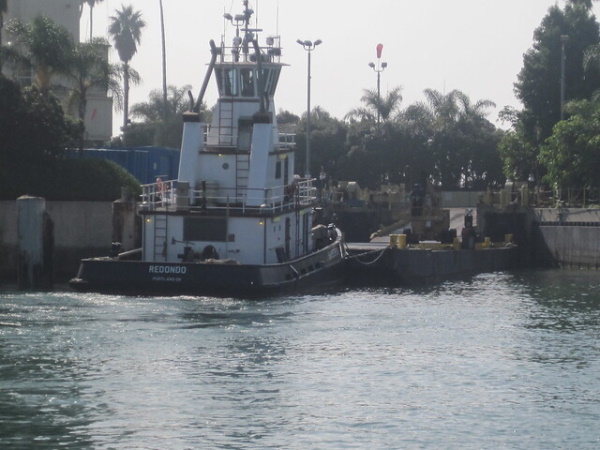
By 1964 a design study had been prepared for the Thums Long Beach Company by, and this is not so surprising, the same designers who worked on Disneyland’s Tomorrowland. The designers gave the four islands a tropical resort look complete with palm trees, faux buildings and (on two of the islands) waterfalls up to 45 feet tall. The purpose of the waterfalls was twofold: provide an appealing appearance and help mask the sounds of the drilling and pumping equipment. By 1965 construction began and quickly shifted into high gear. The islands were built up from 3.2 million cubic yards of silt and sand dredged from the bottom of Long Beach Harbor. Larger rocks and boulders – 640,000 tons of them – intended to protect the islands’ shores from wave action were quarried at Catalina Island and barged to the islands, which grew to about 10 acres in area each. Over 700 palm trees were planted to add that sense of tropical flair and to stabilize the new soil with their root systems. (image via EnergyTomorrow)
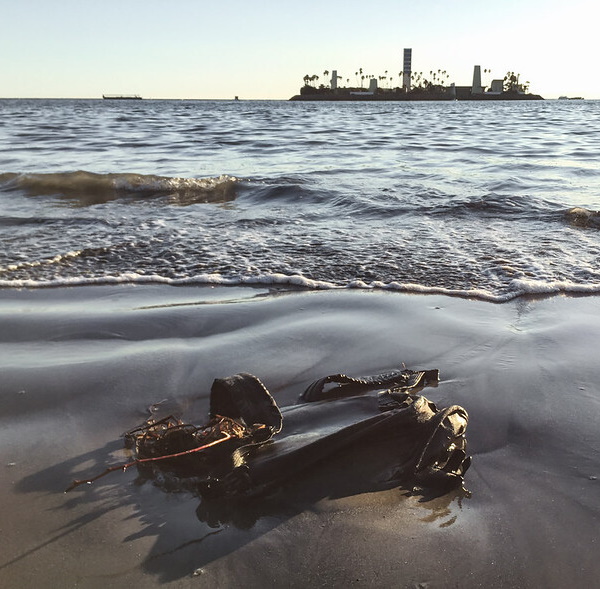
The oil derricks were covered with faux skyscraper skins; painted white with contrasting colored blue or green “balconies”. In some cases the disguised derricks were mounted on wheeled platforms so that they could be shifted to other locations on the islands. The urban camouflage of the THUMS oil islands was remarkably effective by day; it was at night that the real beauty created by the Disney designers was unleashed. Banks of multicolored spotlights bathe the faux buildings and waterfalls in a riot of rainbow light, making them popular subjects for amateur and professional photographers alike. (image via Ingrid Taylar)
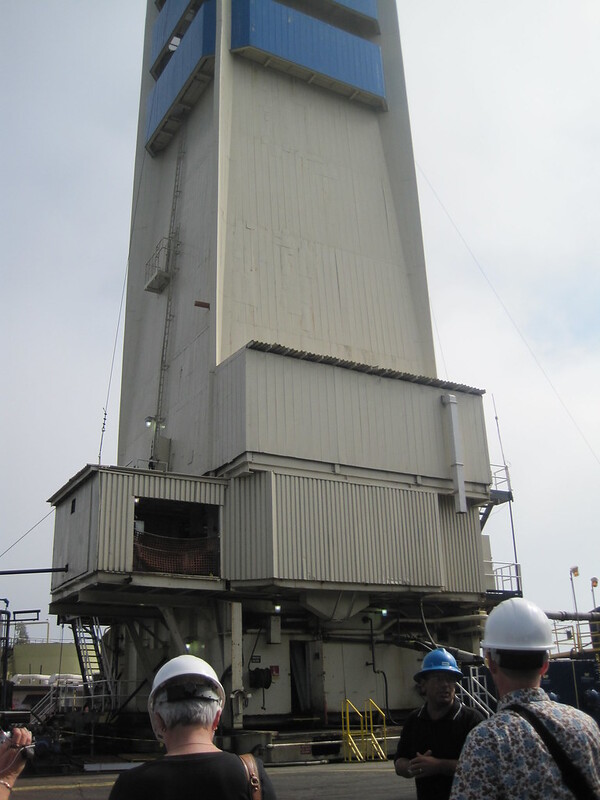
Last and not least, the oil islands were given a final polish of respectability through the names they have been given: Moving from east to west, you’ll find Island Chaffee, Island Freeman, Island White and Island Grissom. Each name is that of a NASA astronaut who perished in the line of duty – Roger Chaffee, Ed White and Virgil Grissom in the Apollo 1 tragedy on January 27th, 1967, and Theodore Freeman, who died in a plane crash on October 31st, 1964. (image via EnergyTomorrow)
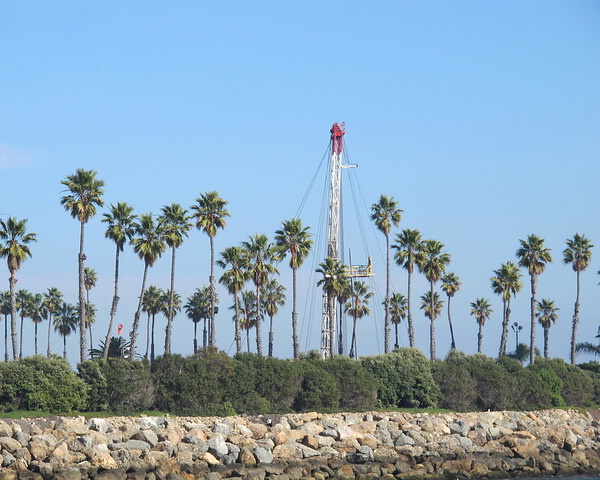
In most every respect, the THUMS oil islands have been a shining success that has brought some unforeseen benefits to the Long Beach seacoast. Besides the revenues that provide the City of Long Beach with about 5% of their annual budget, the boulders (some weighing up to 5 tons) that surround the four artificial islands have proved to be favored shelters for a wide variety of marine life. In effect, the Oil Islands were one of the first examples of an artificial reef. Above sea level, wetland birds including herons, grebes, falcons and even parrots have not only survived, but thrived. (image via donielle)
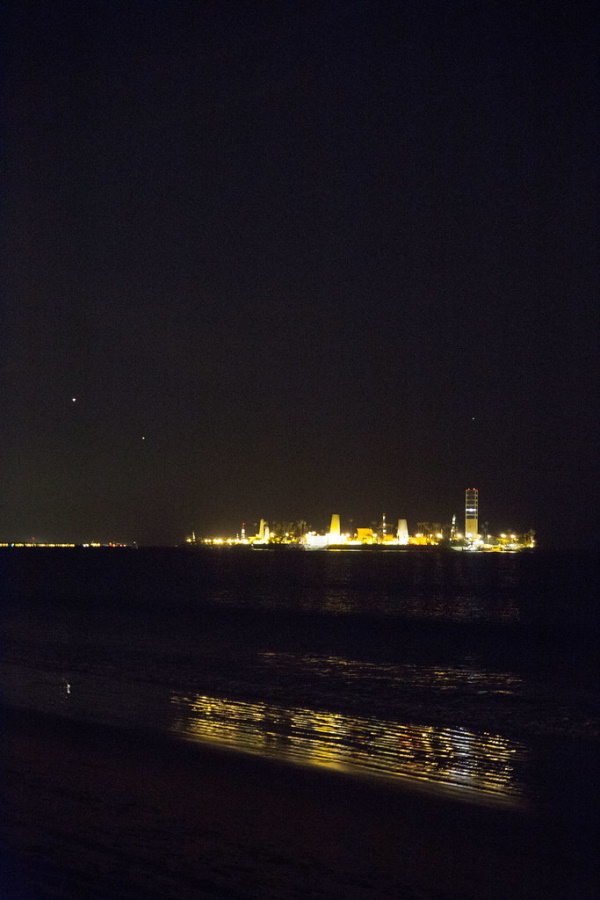
Greenwashing as a term has, due to abuse by cynical corporate PR departments, taken on a pejorative quality. It’s good to know that in cases like the THUMS Oil Islands, greenwashing has surpassed the realm of hype and provided an improved quality of life for both Man and beasts. (image via Faces of Fracking)



